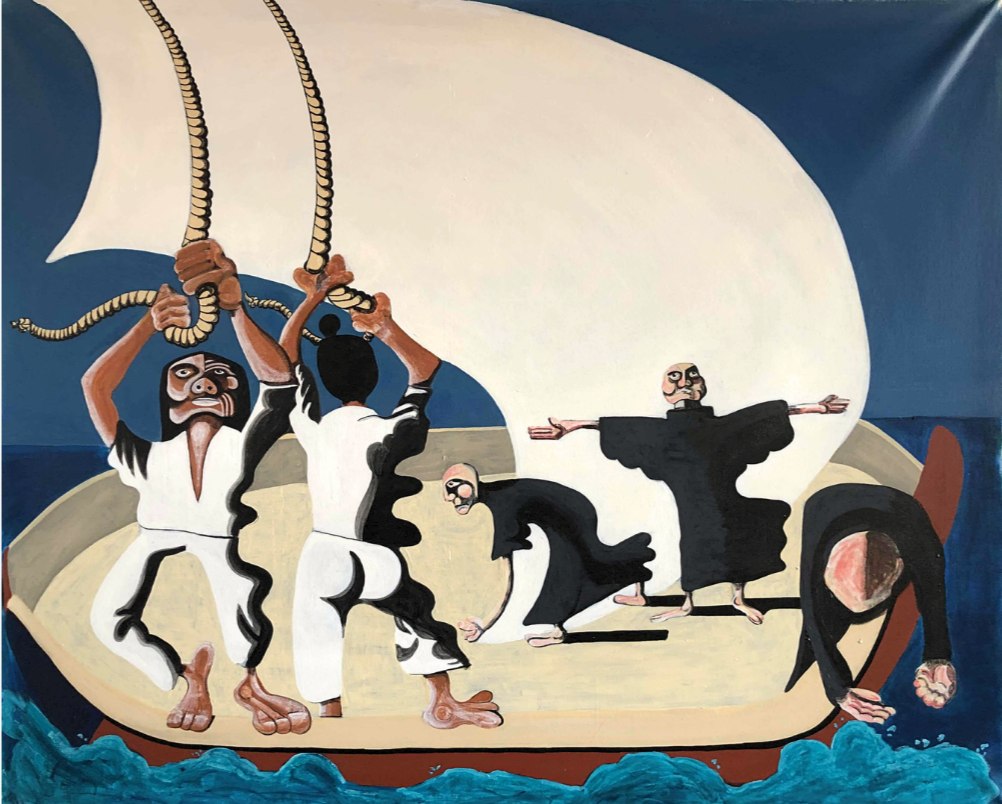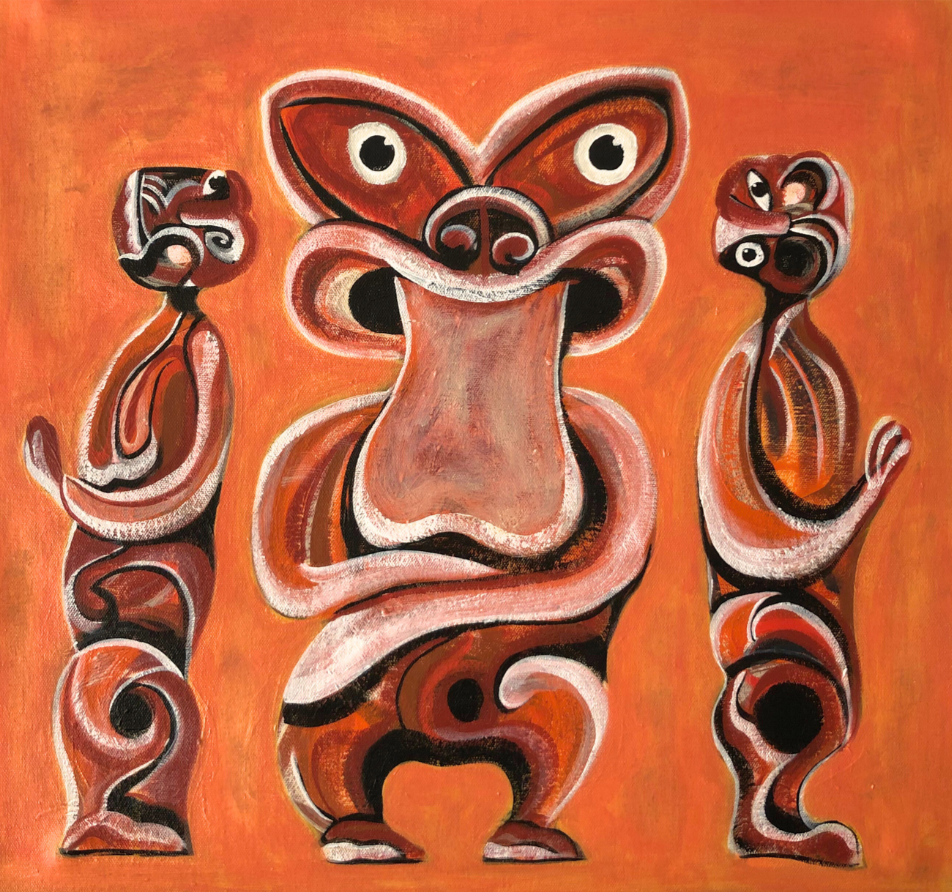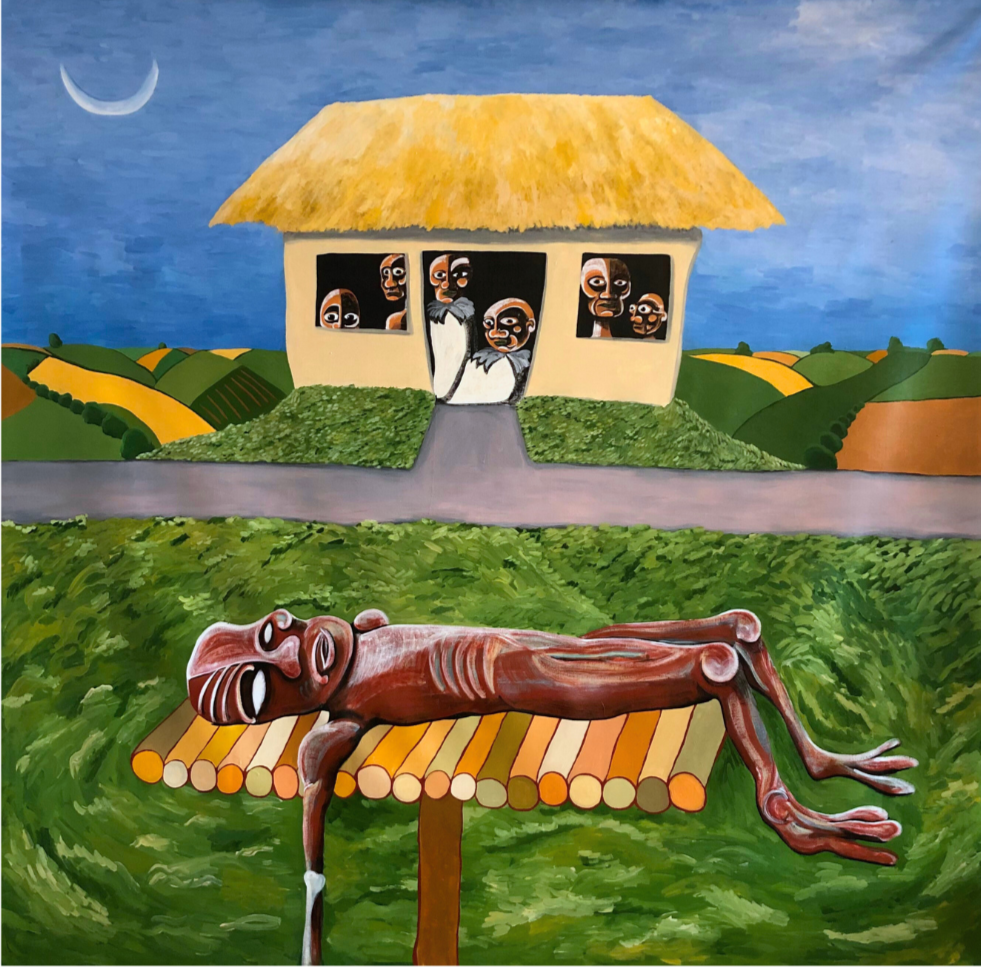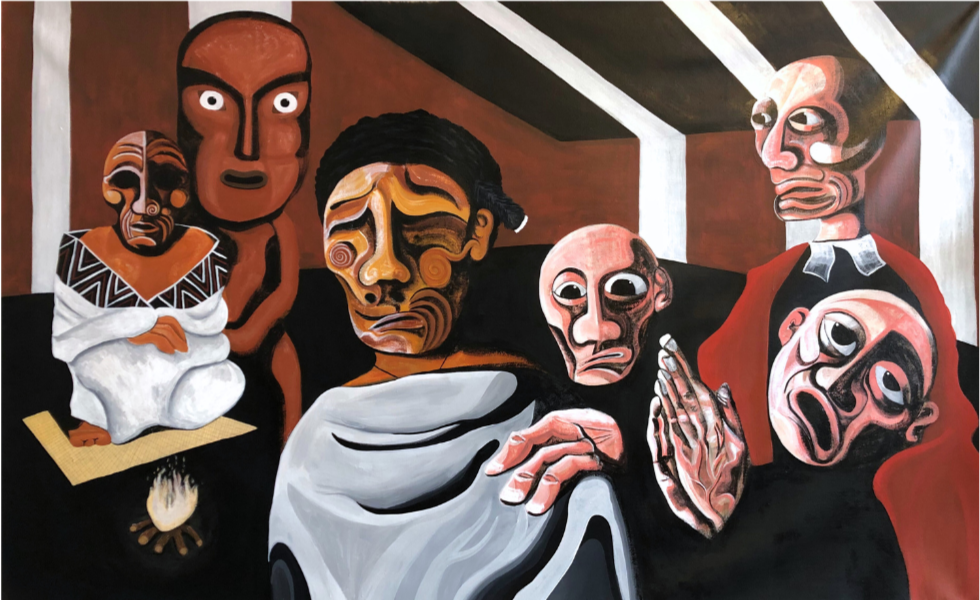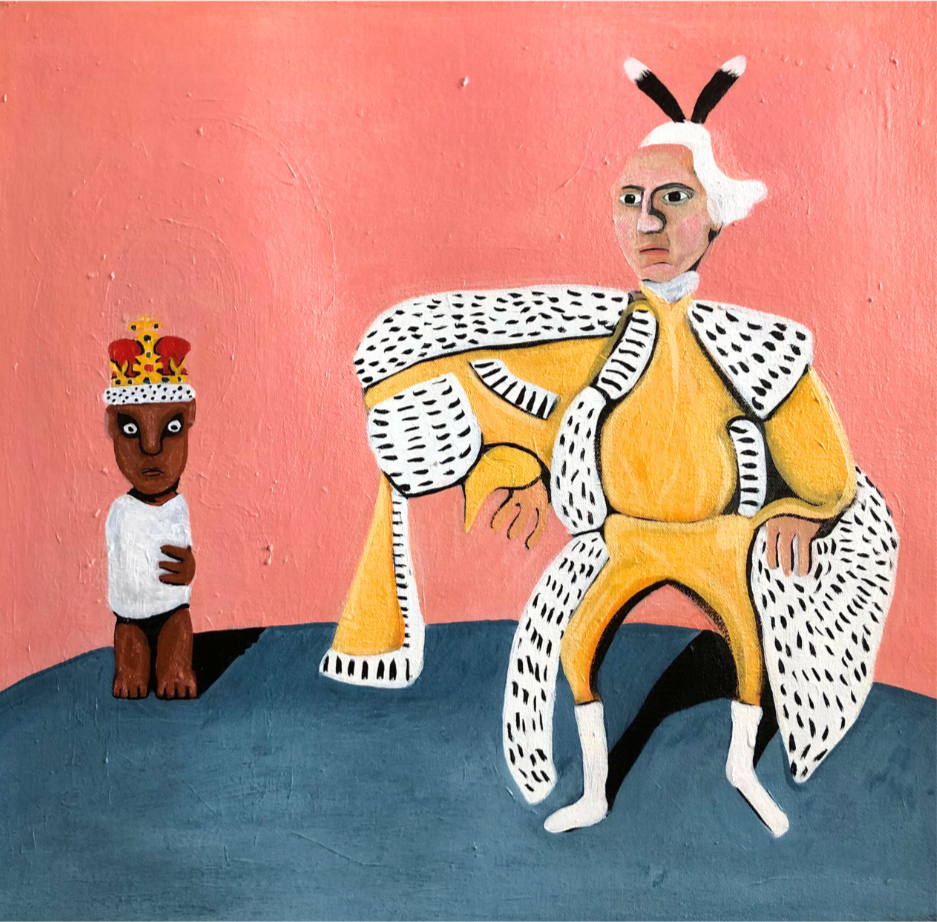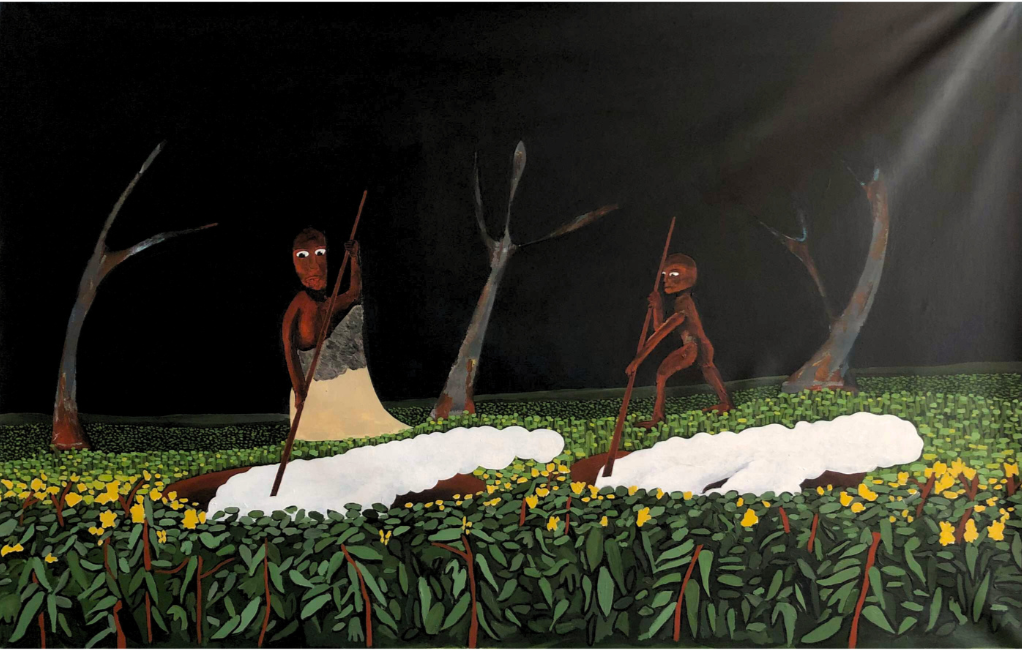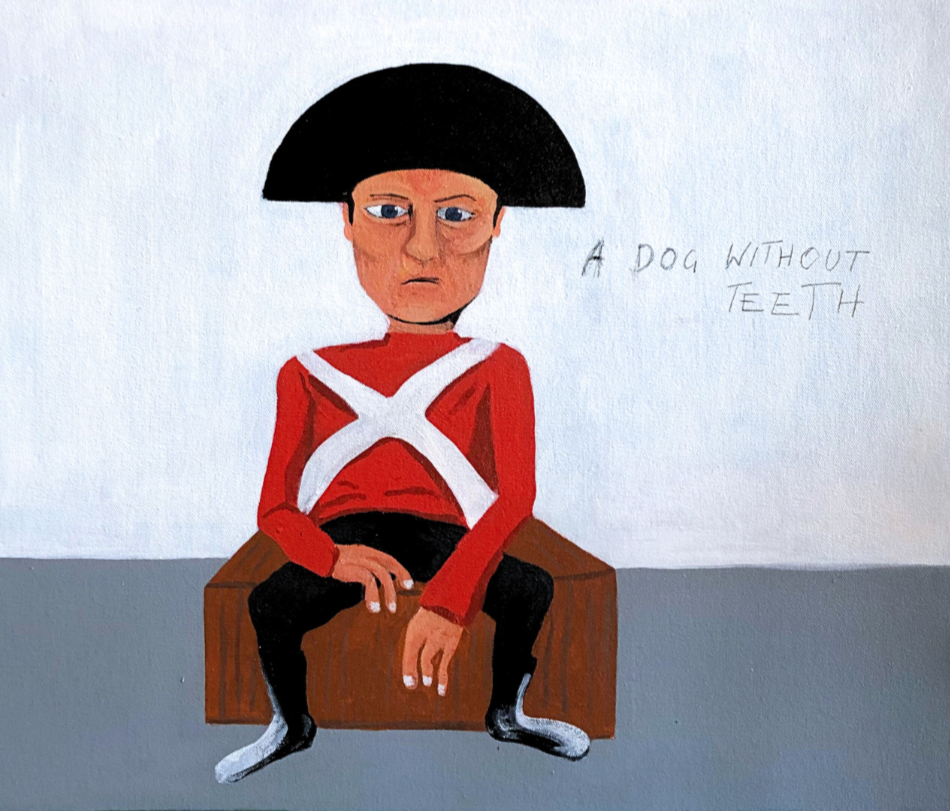Te Koha
Te Koha depicts the story between Ngāpuhi and the British Empire before the signing of Te Tiriti o Waitangi (1793-1840).
These works are centred on hau– a Māori philosophical mechanism based on the ‘the breath of life’. As all life is shaped by hau— through exchange, part of the donor's soul becomes entangled in the gift, and through its wish to return home, compels the recipient to make a return. Just as in our own society, there is often a pretense of pure generosity when one first gives a gift, though in reality, the receiver can be expected to return something of equal or greater value later on. Hence a gift can often be a challenge, a form of checkmate, that is to say– you give to people because you assume they would do the same.
Te Koha shows that Māori have long been a part of Australia’s colonial history— a brutal wound which spilled its way to Aotearoa. From Kings to Chiefs, nobles to missionaries, gifts initiated the encounters, voyages, and relations that shaped our colonial past. Through this, Te Koha makes the past readable again, where the interactions between Māori and Empire were shaped by conflicting forms of exchange. Unlike in today’s economy, hau has nothing to do with making a profit, or scoring a moral victory at anyone’s expense, it shows how the exchange of material achieves social integration. That to present something is to present something of oneself. For Māori, this was the very glue that held society together.
*all prices are in AUD
**all paintings are unstretched
Hēhē
60 x 60cm
Acrylic on canvas
SOLD
Noho puku
121 x 156cm
Acrylic & spray paint on canvas
SOLD
Tuki Tahua, tohunga ō Muriwhenua
Ngahuruhuru (Te Hurukokoti) rangatira ō Muriwhenua
110 x 163cm
Acrylic, spray paint, oil stick on canvas
SOLD
King Matara & Ariki George
60 x 60cm
Acrylic on canvas
SOLD




